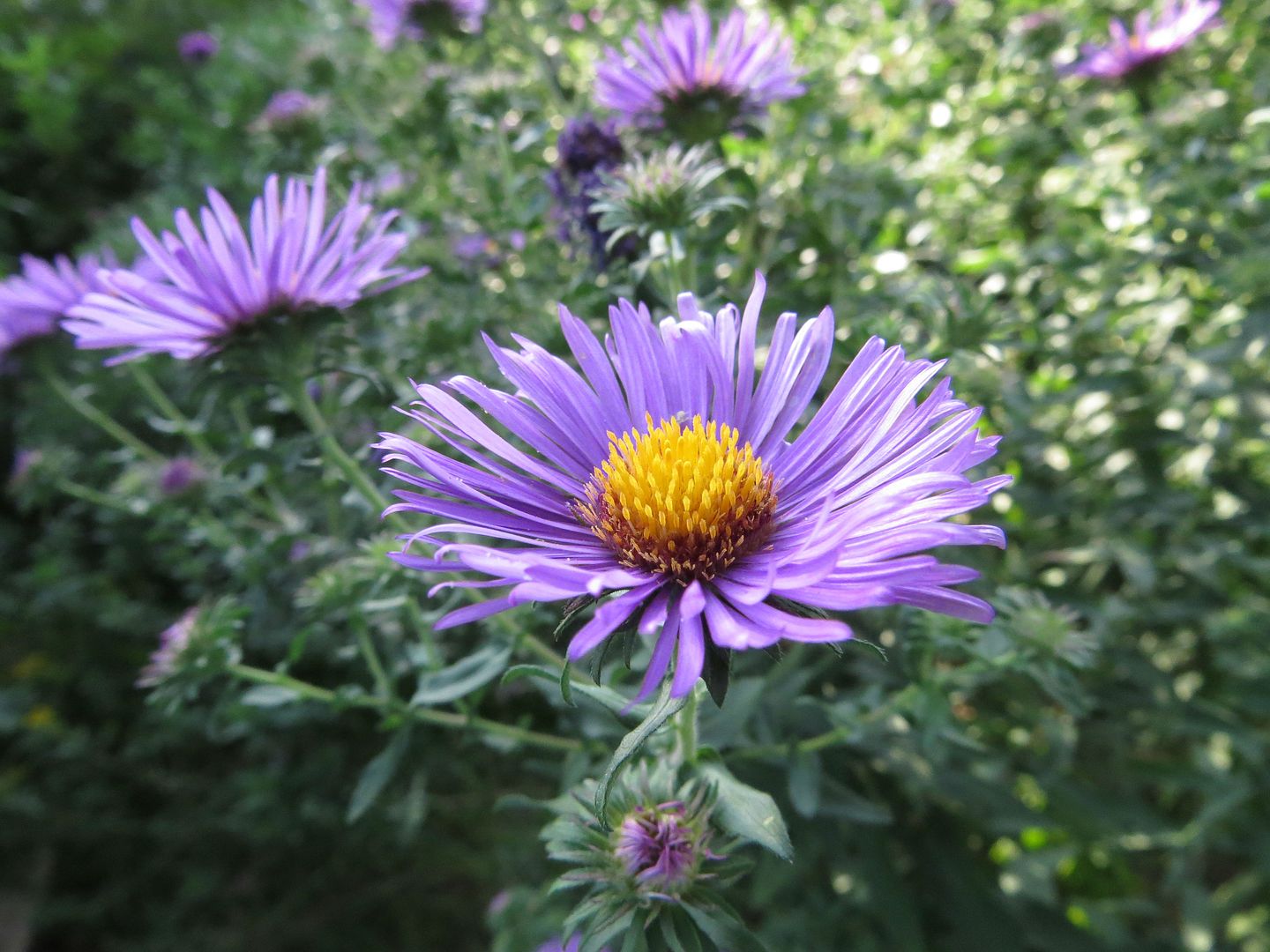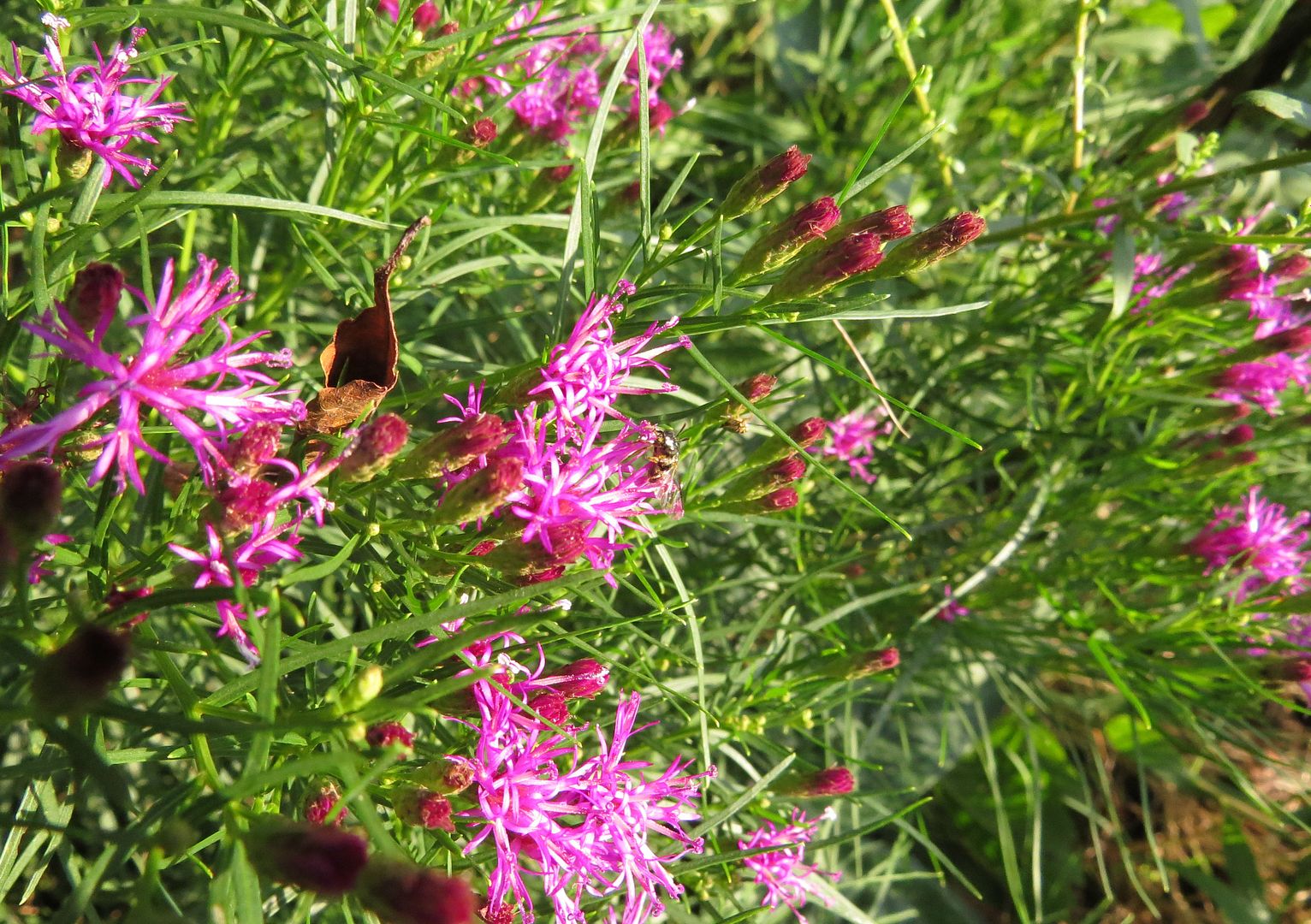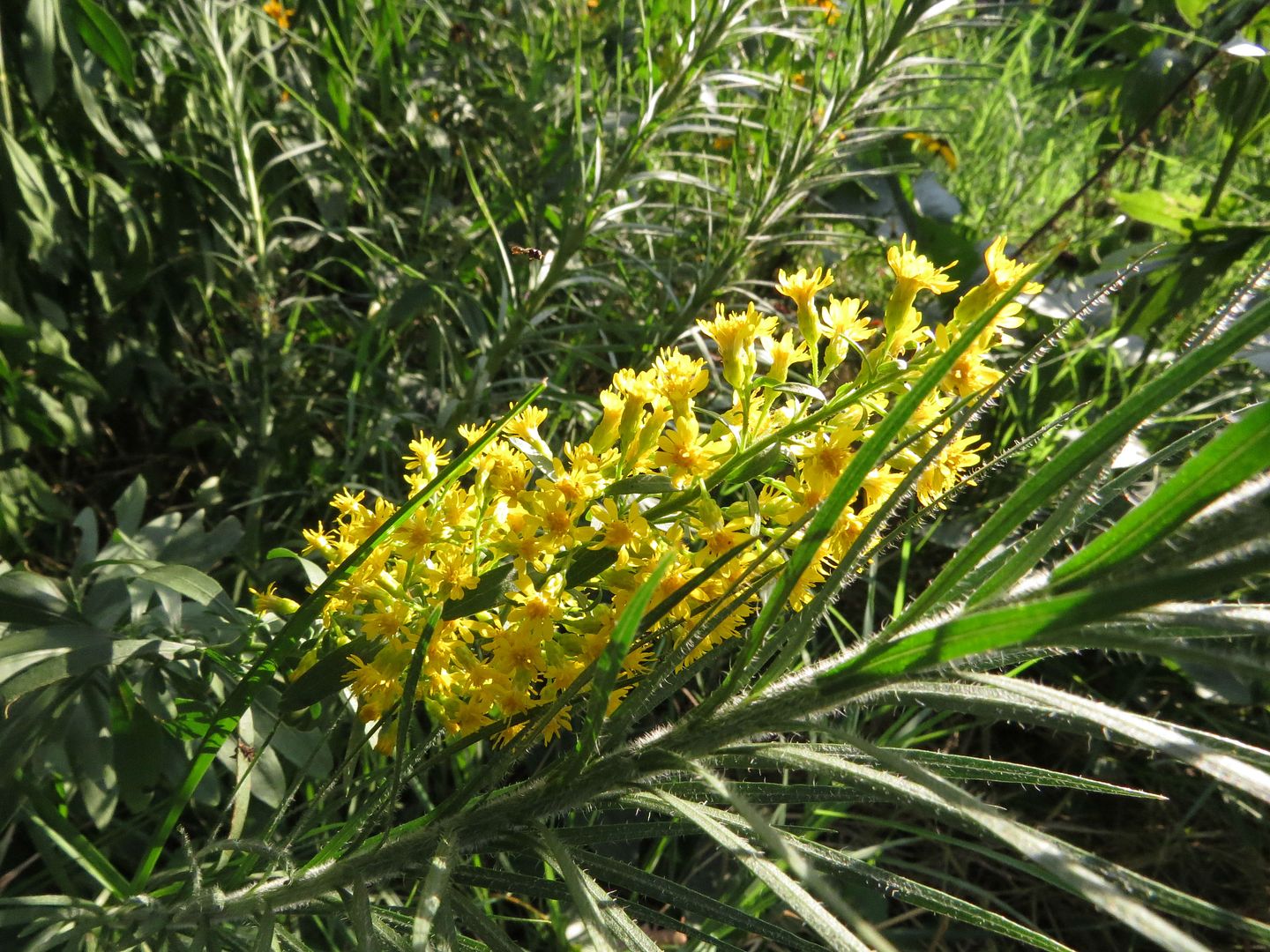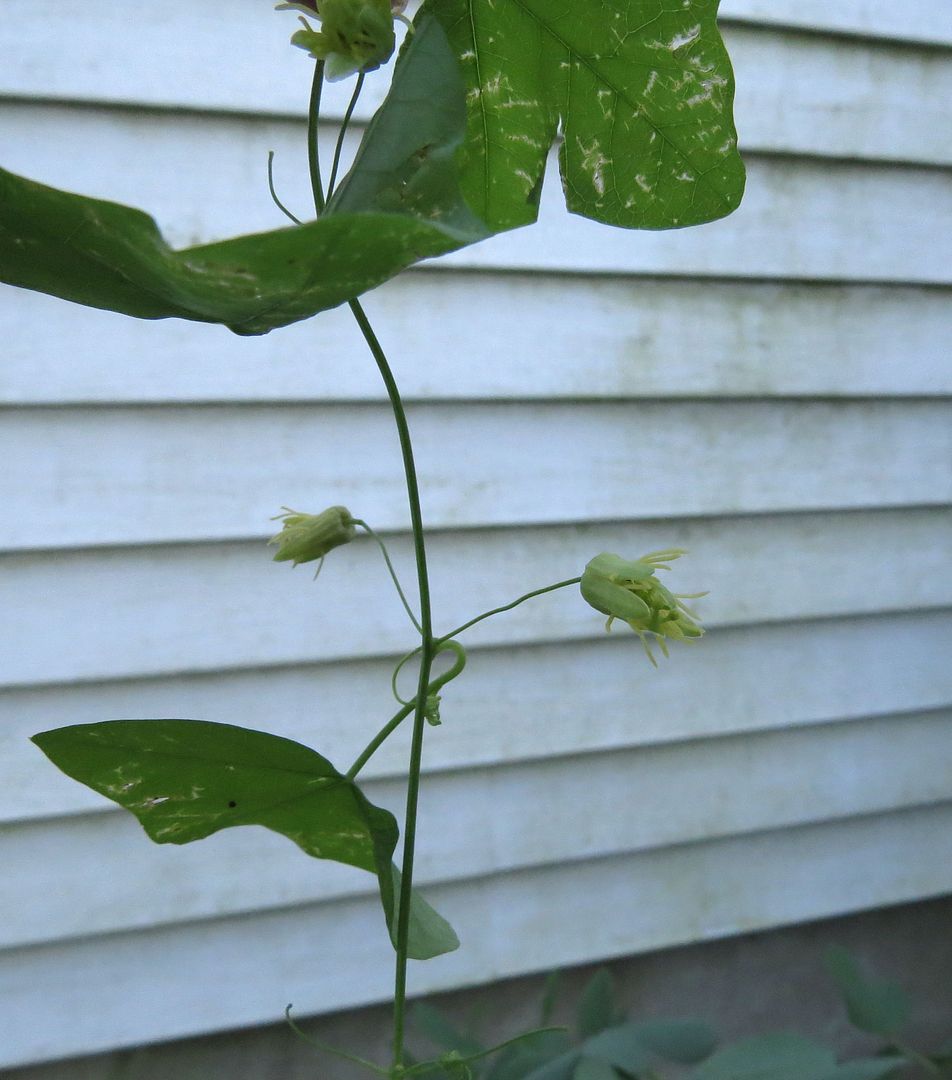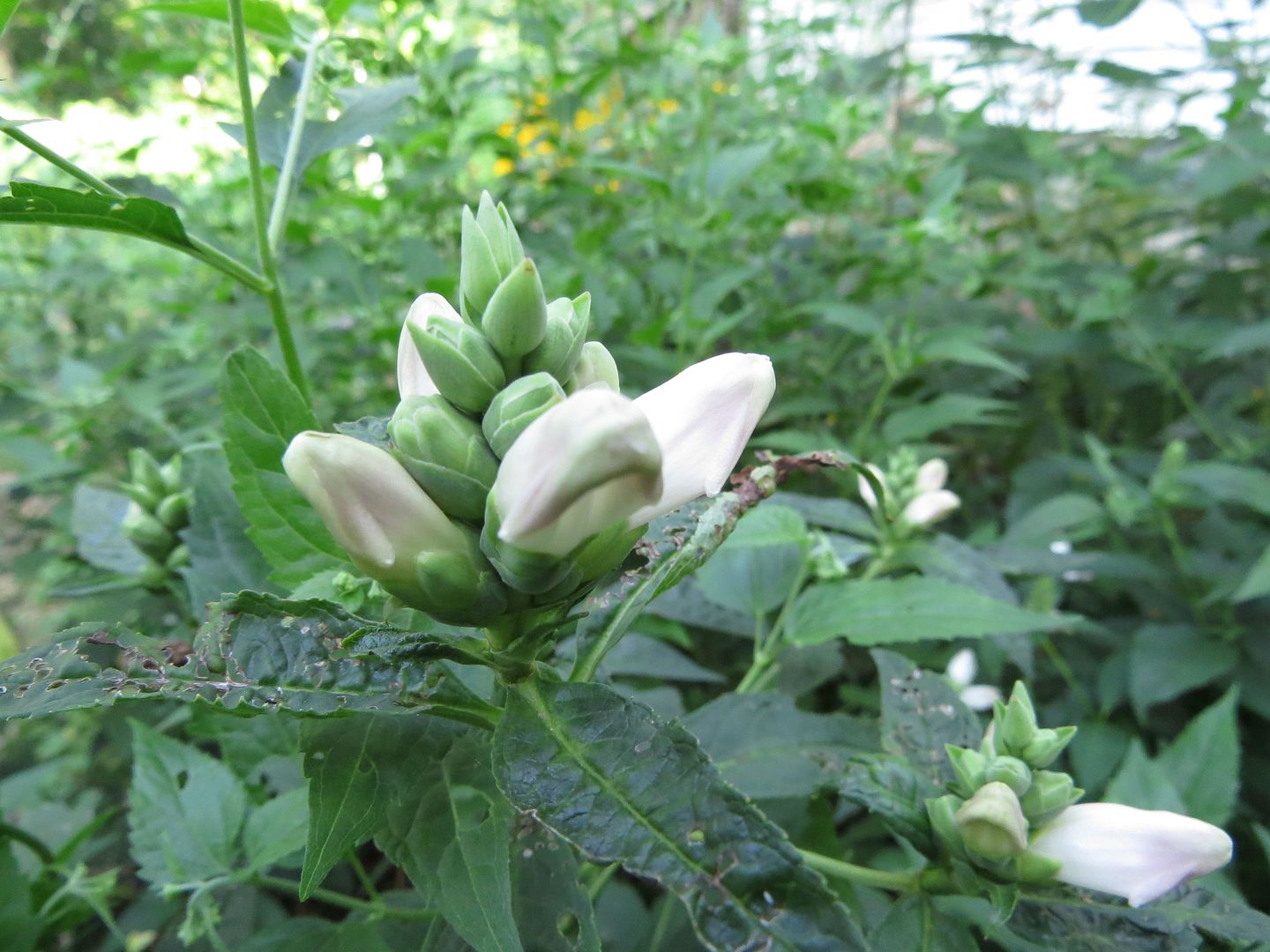Thursday, September 5, 2013
September Wildflowers
New England Aster, Symphyotrichum novae-angliae, is an autumn (late summer) highlight as always. And has only recently started spreading like a weed, presumably because it's not able to pollinate itself, but two or more plants will. Plants can also be divided.
Narrow-leaf Ironweed, Vernonia Lettermannii, curiously enough the flowers this year are pink, last year they were purple. I'm not sure what caused the change. Supposedly this is the cultivar 'Iron Butterfly' though I'm not sure what's so special about it.
Showy Goldenrod, Solidago speciosa, has petered out a bit in my garden, but new seedlings are at that flowering age now so hopefully it hangs in there. This isn't the best example because usually there are way more flowers, but they always produce a compact amount of them at the top of each stem.
Yellow Passionflower, Passiflora lutea, is a timid member of this aggressive genus. I'm not sure if it's hardy here in zone 7 (previously zone 6 as of a few years ago), so hopefully it survives. Calling it a "Passion Flower" isn't entirely accurate because the flowers are not very showy and simple by comparison to other Passionflowers. I have yet to see the flowers open fully too, presumably they close by the afternoon or require full sun to open. Fruit-wise it's said to be inedible, with sources saying it's better used in the production of ink... yuck.
White Turtlehead, Chelone glabra, is not a particularly showy plant but it's good if you have a wet spot in partial shade to full sun in need of some late blooms. This is the host plant to the Baltimore Checkerspot, a locally threatened species of butterfly with an odd life style. Basically the caterpillars form a communal net on the plant and over winter inside it. Come spring they emerge still as caterpillars but are less picky about what they consume. Their host plant, Turtlehead, probably hasn't broken ground yet for the year so they turn instead to other plants like Monkey Flower (which I have yet to grow successfully).
Tall Coreopsis, Coreopsis tripteris. This is kind of a deceptive photo because it's taken at eye level. I'm about 5'7" and that's where this plant gets its name. They can grow to be 10' tall though individual plants often stick to a max size each year, which makes cultivars easy to pick out because they can selected to be a specific size.
Summer Phlox. Don't know the species, don't really care either. Years and years ago I planted this in the front garden where it was too shady for it to flower. Now that we took down a street tree that seems to have opened up enough light to give what I honestly thought was a Bee Balm for the longest time to flower.
Most impressive of all is this Northern Blazing Star, Liatris borealis. The flowers are almost twice the size of Meadow Blazing Star, L. ligulistylis. The height is easily 5' tall also contrary to what the nursery I bought it from (and others!) said it only grows to 2' tall. Granted this is an enormous bulb almost the size of a baseball and it sent out three canes, two of which fell over, but the main one in the center is pushing strong. Note how the flowers extend away from the stem some on their own stalk, well this is the only Liatris species I've seen that will put more than one flower head on those! It's putting the New England Aster next to it to shame at this point. I'll post more pictures of it later.
